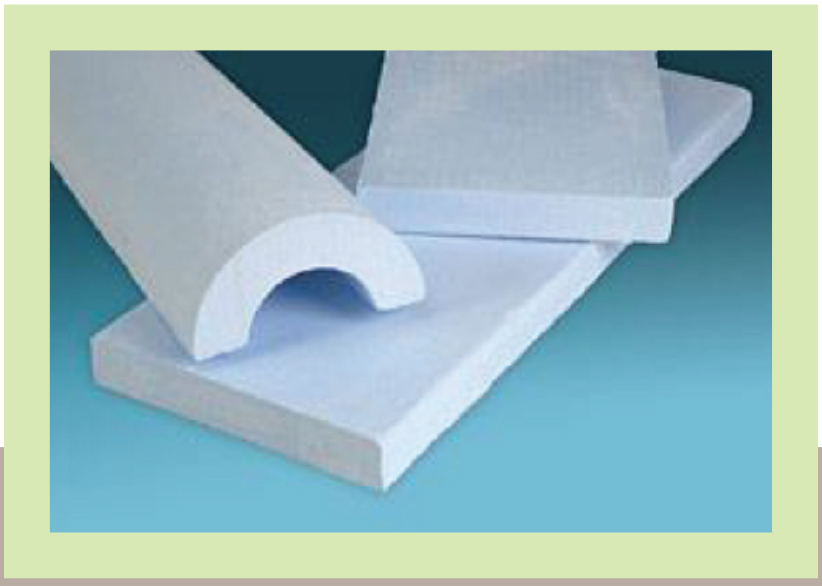Exploring Insulation Materials: Molded Expanded Perlite
Molded Expanded Perlite
Insulation Products
Molded Expanded Perlite
insulation is defined by ASTM as insulation composed principally of expanded
perlite and silicate binders. It may also contain
reinforcing fibers.
Perlite Pipe and
Block Insulations are covered by ASTM C610. The standard covers the material
for operating temperatures between 80°F and 1200°F.
Perlite pipe
insulation is supplied as a hollow cylinder split into half or
quarter sections, or as curved segments. Pipe insulation sections are typically
supplied in lengths of 36″, and are available in sizes to fit most standard
pipes. Available thicknesses range from 1″ to 4″ in ½” increments. Thicker insulation
is supplied in nested sections.
Perlite block insulation is supplied in lengths of
36″ and 1 meter, widths from 24″ and in thickness from 1½” to 6″ in increments
of ½”. Perlite molded fitting cover insulation is available for a wide variety
of standard elbow and tees.
Scored and V-Groove
sections are also available. Special shapes such as valve or fitting insulation
can be fabricated from standard sections.
Perlite is normally
finished with a metal or fabric jacket for appearance and weather protection.
The specified
maximum thermal conductivity for both block and pipe insulation is 0.48
Btu•in/(h•ft²•°F) at a mean temperature of 100°F.
Perlite insulation
products also comply with the ASTM C610 requirements for flexural (bending)
strength, compressive strength, weight loss by tumbling, moisture content,
linear shrinkage, water absorption after heat aging, surface-burning
characteristics, and hot surface performance. Additionally, it complies with
the standard for use in contact with austenitic stainless steel.
Typical applications include piping and equipment
operating at temperatures above 250°F, tanks, vessels, heat exchangers, steam
piping, valve and fitting insulation, boilers, vents, and exhaust ducts.
Perlite insulation is often used in insulation systems where water may enter
and cause corrosion or process problems. Examples of this would be wash-down
areas, deluge testing, pipes that cycle in temperature, and stainless steels that
are susceptible to stress corrosion cracking.

